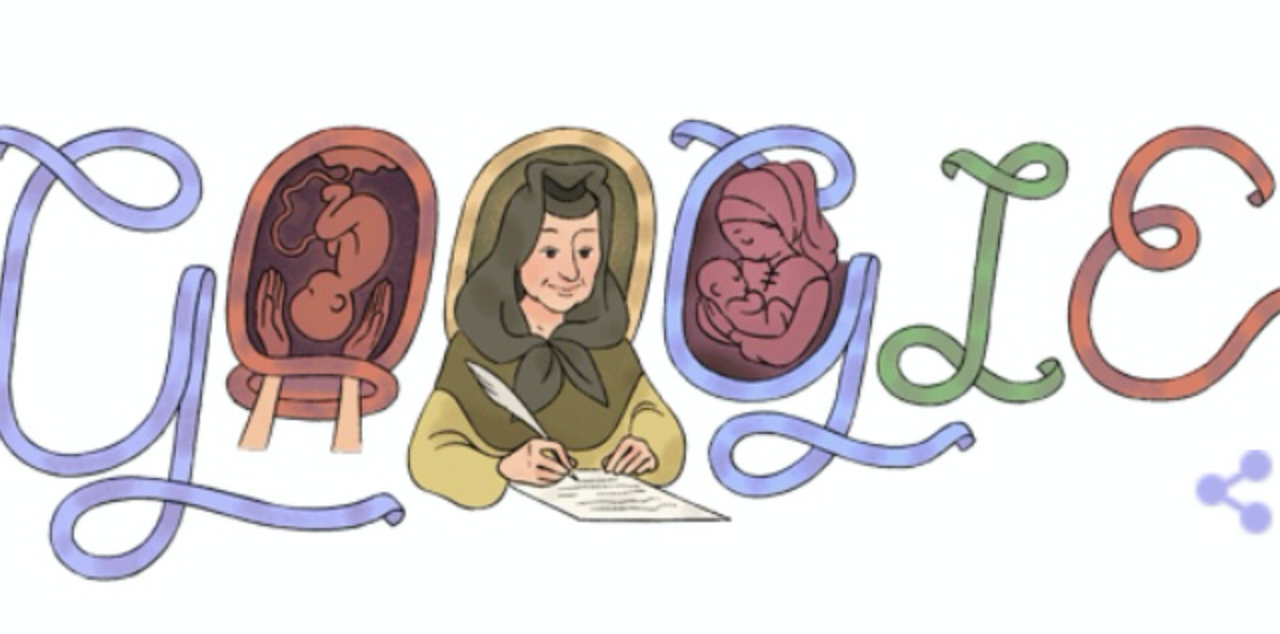It’s called the “Google Doodle” – special artwork that alters the traditional logo of the tech giant, usually to commemorate a holiday or special event.
Today’s feature highlights 17th-century midwife Justine Siegemund, a German author who wrote “The Court Midwife,” a rare work that examines midwifery from a woman’s perspective.
Midwives are trained healthcare professionals who assist mothers in the delivery of their children. They’re often based out of a family’s home, but many enjoy hospital privileges, too.
There on the front page of Google, a page that enjoys an average of 8.5 billion clicks per day, is a drawing of a baby in the womb – and then a woman holding a baby outside of it.
Justine Siegemund hailed from Poland, where she was born in 1636. Her father was a Lutheran minister. History suggests Siegemund was misdiagnosed by a midwife when she was twenty. The individual told her she was pregnant, while in reality she was suffering from a prolapsed uterus. Feeling poorly served, the Polish native was driven to become a pioneering author on the subject, studying obstetrics and childbirth. Her book was the first of its kind and was motivated by a desire to help other women and families.
Google’s decision to feature Siegemund today tracks back to March 28th being the anniversary of the book’s release in 1690.
It’s refreshing and encouraging to see Big Tech acknowledge and celebrate life, however inconsistent they might be. Images of pre-born life remind users that it’s a baby and not simply an unformed blob of tissue.
Growing up in the late 1970s and ‘80s, my best friend’s mother was our resident midwife. Jeanette Breen struck me as a pioneer back then, though little did my young mind know she was reprising a role that was commonplace for centuries.
Mrs. Breen was committed and dedicated, sacrificing all kinds of family functions, ballgames, and especially sleep, in order to serve the families and children in her care. She was a proud champion of life, and celebrated each and every birth as if it were her first and most important. She made a positive impression on the neighborhood – and me.
In the past, Google has been accused of censoring and even blocking pro-life advertisements. Back in 2021, Live Action and Choose Life Marketing had previously approved advertisements blocked from publication.
At the same time, pro-abortion zealots have accused Google of providing a platform for pregnancy resource medical clinics to advertise their life-saving services.
If we’re to continue cultivating a pro-life culture, it’s important to normalize and lift up images of babies in the womb – and acknowledge the healthcare professionals who care and shepherd children’s arrival into the world.
An illustration on Google may seem minor and even overly simplistic, but billions of impressions can nevertheless help shape public opinion for the good.
Ironically, Justine Siegemund never gave birth herself, but her actions and writings helped inform and save countless other children’s and women’s lives. Good for Google for closing out the final week of Women’s History Month with a true woman worthy of highlight and honor.






